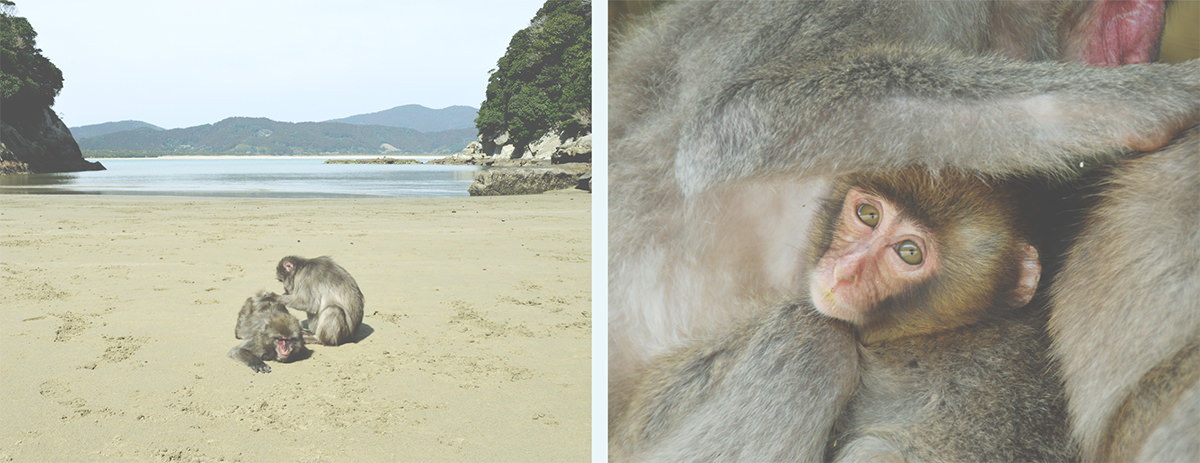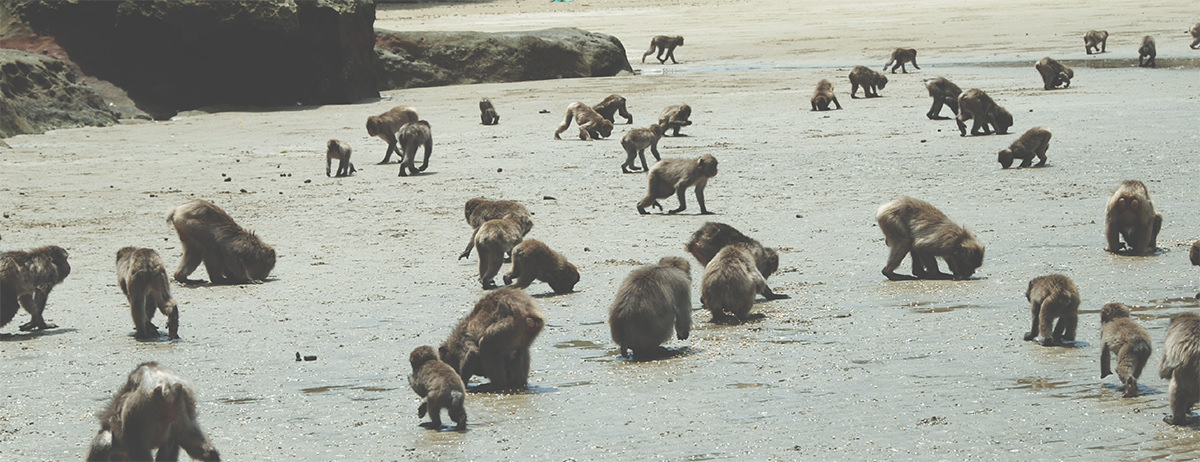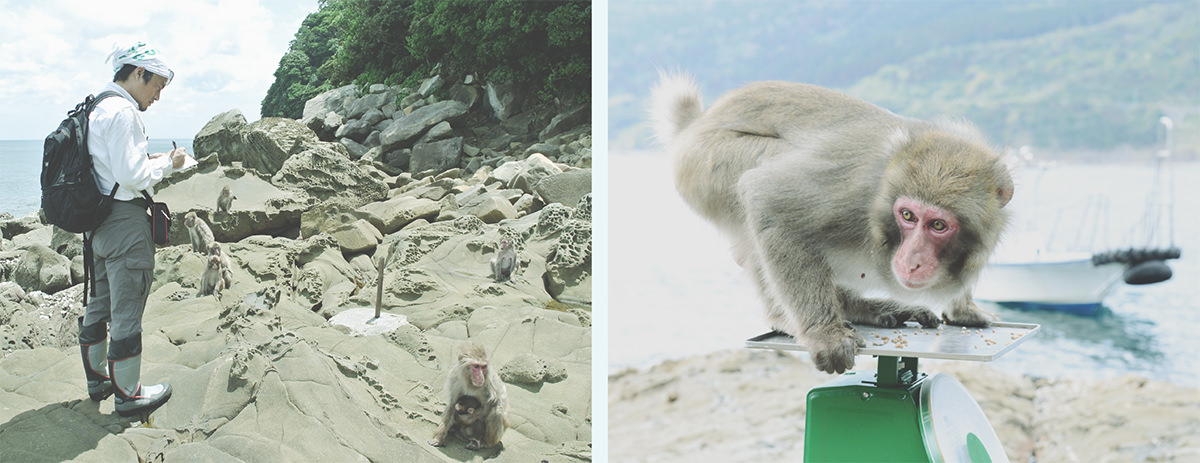Monkeys on Koshima Island
Koshima Island and the Japanese monkeys living on the island were desiginated as a National monument in 1934.

Life history of the Japanese Macaque
The Japanese Macaque is endemic to Japan, and distributed from Aomori pref. to Yakushima Island, while the distribution is fragmented in some regions. This species is known as the northernmost non-human primate in the world.
In Koshima Island the macaques live in 2 groups now. Each group is consisted of less than 50 individuals inculuding plural adult females and males. There are dominance ranks in a group, and the highest is an alfa male.
Babys of the macaques are born in summer, and live with their mothers. When males grow to around 7 years old and get matured sexually, they leave their native troops and start to live alone. Some join a troop later, but others don't. Females remain their native troops after getting matured.
A winter is the mating season for individuals sexually matured. Estrous individuals have red faces and vulva. We can observe their copulations during this season easily. Solitary males come close to the troops and try to access females in the troops for mating, although males in the troops often drive them away. They seem accecpt or refuse copulation according to the timing of estrus or preference in mate choice and so on. Finally females get pregnant and give birth next summer every 2 or 3 years. Then tha adult macaques live to be around 16 years old.

Research for the Macaques in Koshima
All the individuals have names since when we started research in Koshima. Researchers can record various data of an individual in distinction from other ones, as all of them are identified. We also can get precise information about the number of population simultaneously.
There are some rules for naming monkeys.
- Name males with animal names and females with plant names
- Use the same letter for the first letter of names among brothers (ex Kame, Kaba, and Kakesu)
- Don't reuse the same name
- Use 3 or less than 3 letters in Japanese for names as much as possible

We weigh almost all the individuals every months in the island. Body weight is one of the most important parameters, because this parameter have a close relationship with one's survival and reproduction. It is, however, pretty difficult to get the data in field, and our data in so unique and valuable as there is no such long data in other sites.
When we weigh the monkeys, we put some food on the top of a scale and wait for them to get on it. It's so simple, but there should be assumptions that they are well habituated and know presence of food on the scales. It's important to control the individuals for the measurement of low ranked individuals, because ones in high rank try to get on the scales again and again. Then we weigh monkeys in low rank atracting and keeping away ones in high rank. It is neccessary to consider each individual's characteristics to control them.